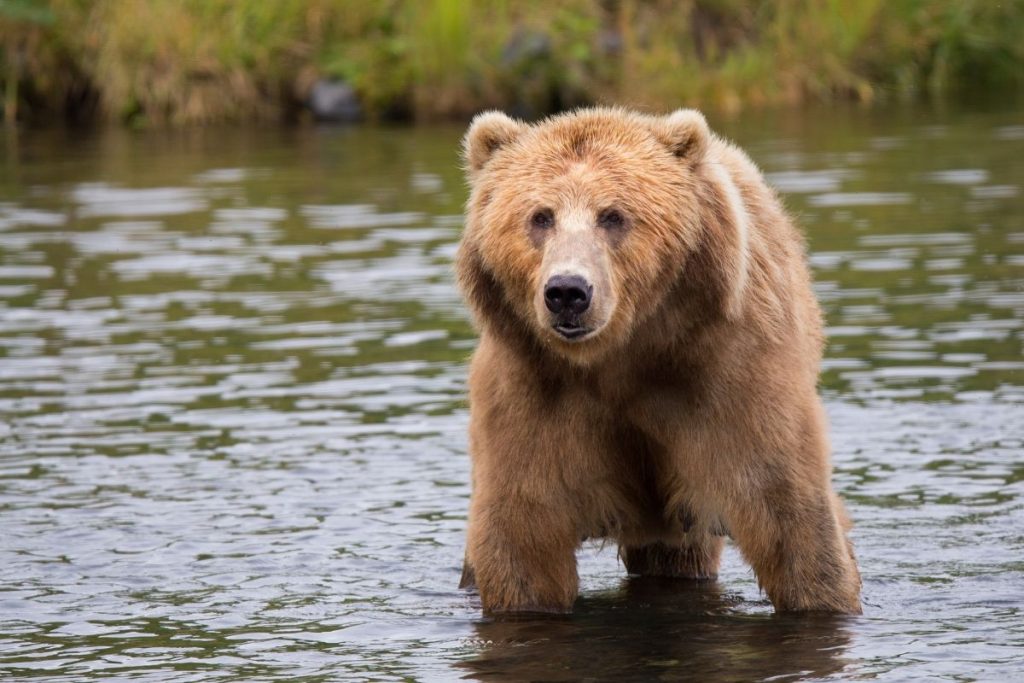Now that spring has arrived in the Big Horn Basin, bears have started to emerge from their winter hibernation. Hikers and hunters are urged to use extreme caution by carrying a can of bear spray with them as a defense in case of an encounter with a bear.
But can a person be prepared enough in case a bear decides to charge? One group wants to make sure a hiker, hunter or outdoorsman can train to be prepared in case the unimaginable happens.
Maria Davidson, a spokesperson for Safari Club International, which is a wildlife conservation and hunting advocacy group, says the group has bought a fake “bear” to train people how to respond to an attack. Basically, the “bear” is an almost-comical looking animal, resembling a bruin, that is mounted atop of a radio-controlled platform that has a top speed of 20 miles-per-hour and will tour Wyoming this summer to teach people how to remain calm and utilize their bear spray that they’ve (hopefully) packed for such an encounter.
Bear spray, when used properly, can deter or repel an attacking bear, but the way the spray bottle is designed, it takes some skill and training to release the safety trigger when a mass of claws, teeth, spit, and muscle is only seconds away from making contact with the person. A few seconds is the difference between life and death.
SCI says that the contraption will be available to Wyoming Gaming and Fish Department that will use it for training seminars across the state this summer.
Dan Thompson, large carnivore specialist for Game and Fish wants to be clear — the bear platform is “not trying to simulate an attack,” but rather view it as an “interactive way for people to learn how to deploy bear spray.” Dan clarifies, “If anything it would be more representative of a charge, but adds a little pressure to grab your spray, take off the release and spray in front of the bear as its coming at you.”
Even though grizzly attacks are rare in Wyoming, (one was only reported last year and that was in Yellowstone National Park) being prepared is a combination mindset of muscle memory and trying to remain calm because “a charging bear doesn’t wait for you to access your canister, fumble with the safety, check the wind speed and direction and aim,” Dan stresses.
One man, named Jeremy Evans, who was on a hunting trip described being attacked by a grizzly and how the bear just ripped off his face. “Her first bite [was] on my face, I was laying on my side. It was her two front canine teeth caught me—one in the corner of the eye and the other side of the eye and down by my jaw. She just crunched all of that in one bite,” Evans told Newsweek magazine. In grisly details, Evans described how he tried to fight the mama grizzly bear by “poking the bear’s eyes and even shoving fingers down her throat.” He then tried to find his gun and load a shell but he “couldn’t put a shell down the chamber of the gun. My fingers [were] too busted up, I found an ear in chunks of my face and I was holding it all together. My left eye was hanging out of the socket, so I had to pick it up or tilt my head back in order to see. My right eye—I thought it was gone—it was smashed up into my skull.” And just like that, it was over. The bear ran off with her cub. It would take another eight hours for Evans to find medical help.
The main thing to avoid being attacked by a bear though can be boiled down to one point, says Dan Thompson: be aware of your surroundings. He sums it up this way: “Situational awareness is still the most important, pro-active thing a person can do to reduce conflict potential, understanding bears and bear behavior provides insight into what causes negative encounters between bears and people, between any wildlife and people. This also allows for a proper response should it occur, people can be doing everything right in life and still have a bad day, that’s part of being a human being and being lucky enough to still have places like Wyoming where risk and reward are still attainable attributes of the outdoors. Education has always been the foundation of the conservation and management of grizzly bears.”










